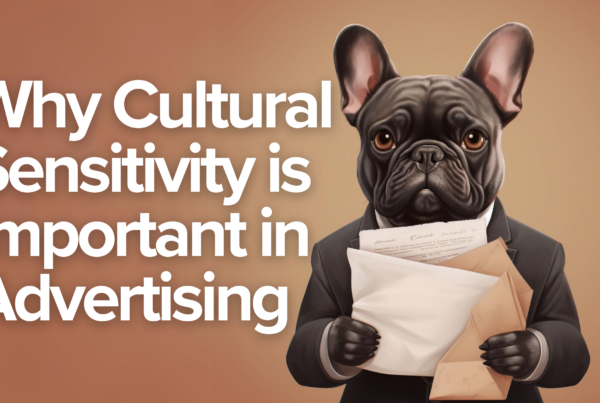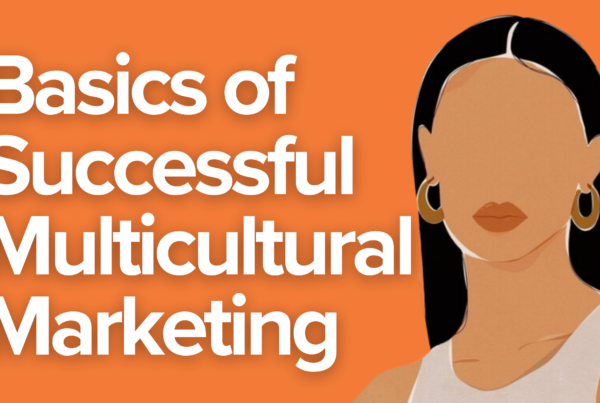Multicultural Audience. What they are? How to find them? Read all about it in this article.
Diversity. Inclusion. Representativeness. Over the past few years, companies have been investing in these concepts to create more inclusive and creative workplaces in order to deliver better products and services to their multicultural audiences.
However, what does this mean for sales and marketing efforts? To put it mildly, brands that continuously fail to engage with their multicultural audiences will keep falling behind.
The difference between LatinX and Hispanic and why it matters for your Multicultural Marketing Strategy
Understanding what it means to be a LatinX or Hispanic is critical for your company’s marketing strategies.
The LatinX and Hispanic Audiences have a combined buying power of over $1.5 trillion – more than 1 out of 6 Americans form these multicultural audiences, making them the largest ethnic market in the country.
Hispanic audiences may come from any of the 20 Spanish-speaking countries in the world, regardless of race. This identity label differs from being a LatinX because it includes Spain while excluding Brazil. Spanish prevails in almost all cases, but some Spaniard families might also speak Catalan and Basque at home.
Although the latest Census reports roughly 60 million Hispanics currently living in the US, projections for 2028 suggest this number will have reached almost 78 million. Furthermore, more than 62% of households have a yearly income of $40-100K per year, making Hispanic audiences a relevant target market with valuable buying power.
Multicultural audiences, particularly LatinX and Hispanics, have a higher brand expectation than any other target market.
LatinX audiences identify themselves as people from Latin America – or having Latin American descent.
This identity label excludes Spain but covers all Latin American countries (including Brazil), regardless of the language they speak: Spanish, Portuguese, and in some cases, Dutch, French, English, native indigenous languages and dialects, as well.
According to the 2018 Census, approximately 60 million LatinX are living in the US today. Additionally, they’re the youngest, with a median age of 30 – meaning that all efforts to appeal to them should also be targeting Millennials and Gen Z members.
Empathy, added value, and a problem-solving approach are vital when connecting to LatinX audiences (or any other group, for that matter).
Currently, about 88% of digitally-engaged LatinX will consume ads that include aspects of their culture, meaning more than just adding a LatinX soundtrack to the campaign.
More than 75% of kids under 18 and young parents with children under 12 believe it’s critical to buy from companies with resonating values.
Your company can create a more efficient MULTICULTURAL MARKETING STRATEGY tailormade for these multicultural audiences after reaching a complete understanding of the differences between being a LatinX or Hispanic.
How To Remain Culturally Relevant When Speaking To LatinX and Hispanic Audiences?
Creating a multicultural marketing strategy in a different target language to engage with your multicultural audience is not enough – and quite honestly, it’s unnecessary in most cases. To truly resonate with both LatinX and Hispanic audiences, your brand needs to be culturally relevant.
Using the appropriate language, understanding their stories, backgrounds, and interests, and most importantly, avoiding offensive stereotypes are vital elements of a successful engagement with any Multicultural Audience.
Multicultural Audience – Case Study #1 – Universal Studios: Hispanic-driven Ads For Despicable Me 2.
While promoting the 2013 film, Universal’s multicultural marketing team developed a series of YouTube video ads targeted at Hispanic consumers. While the movie dialogues remained in English, parts of the video were in Spanish, creating a feeling of inclusiveness.
The videos focused on the film’s Mexican villain, called El Macho, which created a family-centric theme of “Superdad v. Supervillain” that resonated with Hispanic heritage and principles.
Lastly, the marketing team integrated Pitbull’s bilingual hit song “Don’t Stop The Party” within the videos, connecting with the audience’s intense passion for music.
Multicultural Audience – Case Study #2 – T-Mobile & Univision: Non-contract Mobile Services Tailormade For Hispanic Americans.
In 2014, T-Mobile partnered with Univision to launch a contract-free wireless service that offered unlimited text messages (local and worldwide), local calls, and data usage, with the added value of 100 minutes of free calls to Mexico and other specific Latin American countries.
This multicultural marketing campaign might have seemed a bit basic, but it was both empathetic and purpose-driven. The telecom company gave Hispanic consumers a hassle-free solution to communicating with their family members, adding value to their efforts, and listening to their needs.
Why it matters for your Multicultural Marketing Strategy
Understanding your target multicultural audience is key to design a Multicultural Marketing Strategy that matters. LatinX and Hispanic audiences are the largest ethnic market in the country and can not be ignored.
Your company’s multicultural marketing strategy needs to migrate from a “nice to have whenever it’s convenient” to an integral state.
It requires commitment and hard work. Of course, with so many different cultural nuances, it’s only natural to feel lost at times.
During this process, it becomes critical to count on a multicultural marketing agency, like Phu Concepts Inc., with proven expertise in digital communication, online ads, and culturally relevant content focused on LatinX and Hispanic audiences.
HOW CAN PHU HELP YOU?



One Comment